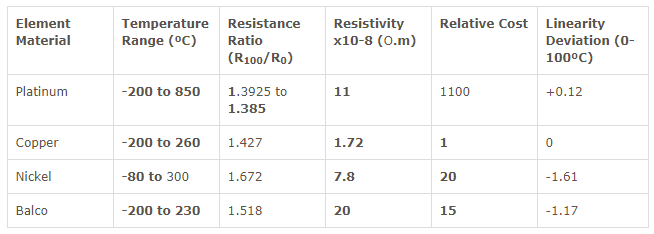Characteristics of various materials used as RTD

As shown in table, although copper is cheapest, it also has the lowest resistivity and therefore requires inconveniently large sensing elements.
On the other hand, even as nickel and nickel alloy have high resistivity, their resistance versus temperature coefficients are non-linear. They are also sensitive to strain and their resistivity suffer from an inflexion around the Curie point (358ºC) that makes the deviation of their resistance/ temperature expressions more complicated.
This platinum which not only has a high resistivity (more than six times that of copper) but also a high degree of stability and a wide temperature range. Although platinum is expensive it can be drawn into fine wires or strips and we only require small amounts for manufacturing RTDs. As a noble metal, it has minimum susceptibility to contamination.
The presence of impurities is undesirable since diffusion, segregation and evaporation may occur in service, resulting in a lack of stability. The resistivity is also sensitive to internal strains. Thus, it is essential that the platinum should remain in a fully annealed condition i.e. it should be annealed at a temperature higher than the maximum temperature of service.